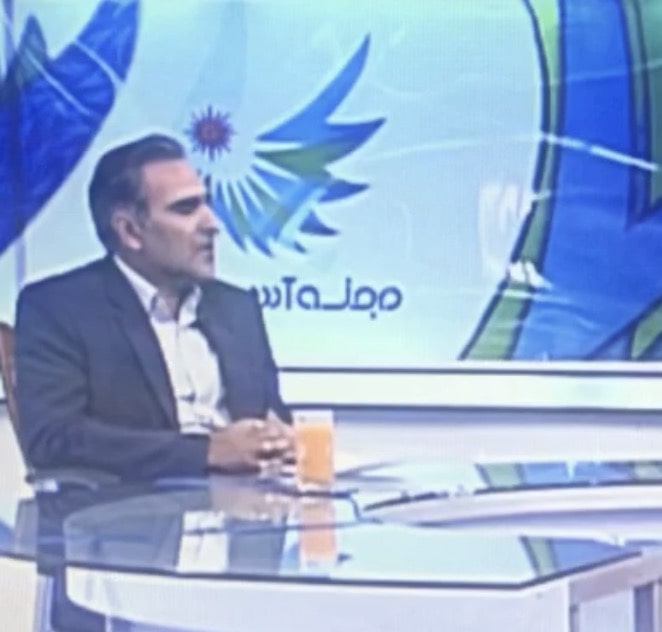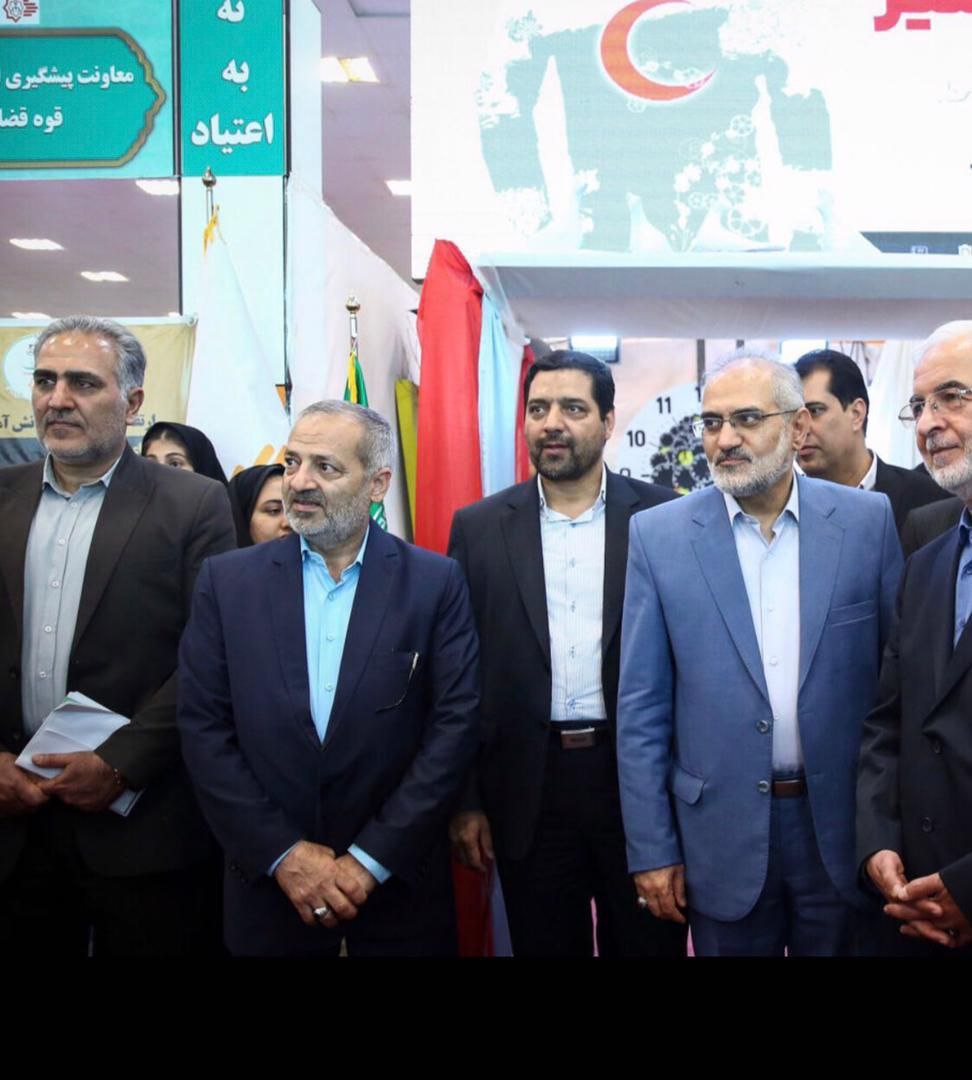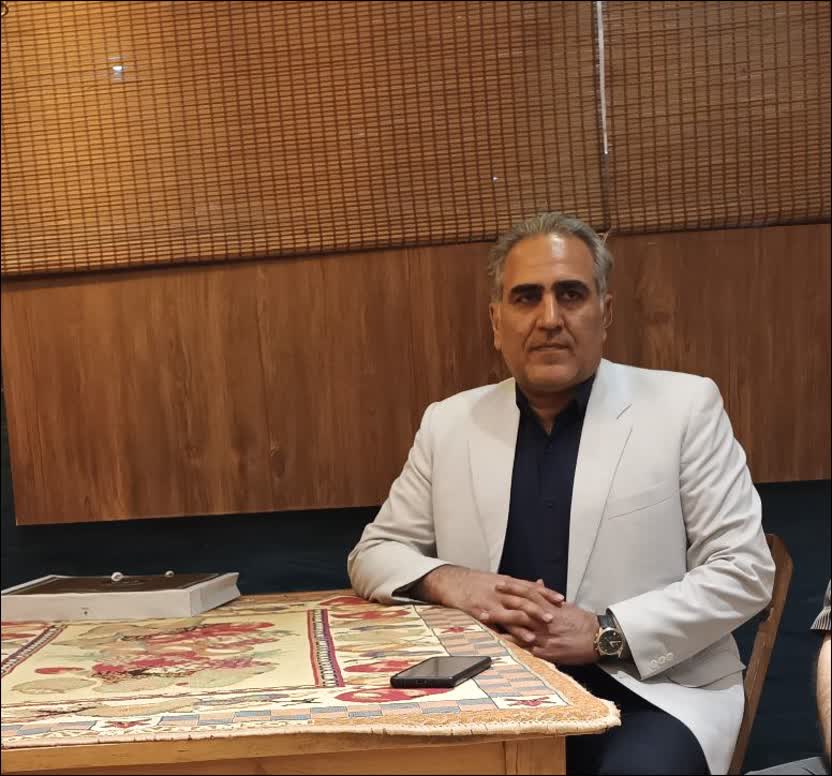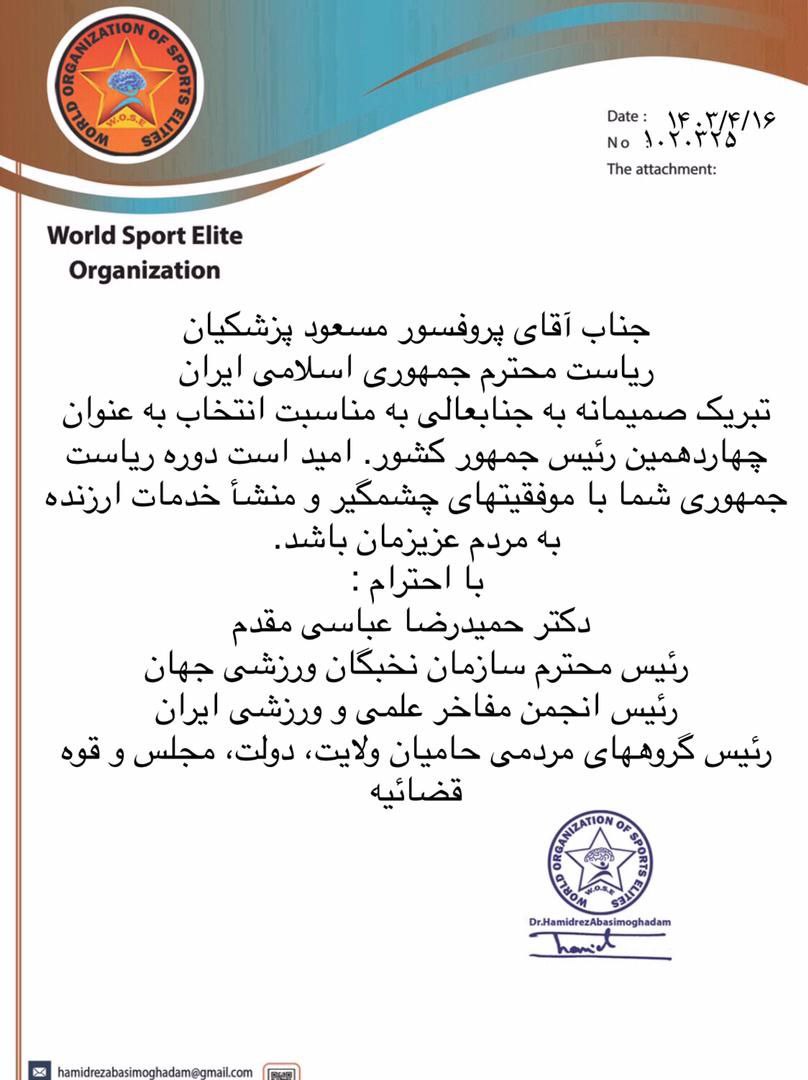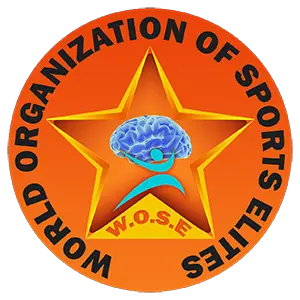طرح ثبت شده دکتر حمیدرضا عباسی مقدم به شماره 1020300درتاریخ 2024/5/25در ایران رییس سازمان نخبگان ورزشی جهان در سازمان بهداشت جهانی
# پروپوزال: ایجاد جهانی سالم از طریق همافزایی منابع
## مقدمه
با توجه به آمار جهانی، از جمعیت 8 میلیارد نفری، تنها 1 درصد دارای مکانیک بدنی خوب هستند. 24 درصد در وضعیت متوسط قرار دارند و 75 درصد از جمعیت با مشکلات سلامتی و مکانیک بد مواجهاند. این وضعیت نه تنها بر کیفیت زندگی افراد تاثیر میگذارد، بلکه منابع سازمانی و مالی را نیز به سمت بیماریها هدایت میکند.
## اهداف
- بهبود سلامتی عمومی: افزایش درصد افرادی که دارای مکانیک بدنی خوب هستند.
- استفاده بهینه از منابع: تخصیص منابع به سمت پیشگیری و سلامت به جای درمان بیماریها.
- همافزایی منابع: ایجاد سیستمهای همکاری میان منابع مختلف برای بهبود وضعیت سلامتی.
## منابع موجود
جهان دارای 6 نوع منبع است:
- منبع مالی
- منبع مادی
- منبع تجهیزاتی
- منبع اطلاعاتی و تحقیقاتی
- منبع انسانی
- منبع مدیریتی
## استراتژیها
- توسعه برنامههای آموزشی: آموزش به افراد در زمینههای سلامتی و مکانیک بدنی.
- ایجاد شبکههای همافزایی: تشکیل گروههای متشکل از 1 درصد افراد سالم برای کمک به 24 درصد افراد متوسط و 75 درصد افراد بیمار.
- توسعه زیرساختها: سرمایهگذاری در تجهیزات و فناوریهای بهداشتی و درمانی.
- تحقیقات و نوآوری: استفاده از منابع اطلاعاتی و تحقیقاتی برای توسعه روشهای جدید پیشگیری و درمان.
## نتایج مورد انتظار
- افزایش درصد افراد سالم: هدف افزایش درصد افرادی که دارای مکانیک بدنی خوب هستند به 10 درصد در طی 5 سال.
- کاهش هزینههای درمانی: کاهش 30 درصدی هزینههای مربوط به بیماریها از طریق پیشگیری.
- تقویت همبستگی اجتماعی: ایجاد حس همکاری و همافزایی میان افراد و سازمانها.
## نتیجهگیری
با همافزایی منابع و بهکارگیری استراتژیهای موثر، میتوان به یک جامعه سالم دست یافت. این پروپوزال به عنوان یک نقشه راه برای بهبود شرایط سلامتی جهانی طراحی شده است و نیاز به حمایت و همکاری کلیه ذینفعان دارد.
#
برای تشکیل شبکههای همافزایی و بهبود وضعیت سلامتی جامعه، اقدامات زیر ضروری است:
### 1. شناسایی ذینفعان
– شناسایی افراد، سازمانها و نهادهای مرتبط با سلامت.
– شامل پزشکان، مراکز درمانی، سازمانهای غیردولتی و جامعه مدنی.
### 2. ایجاد بستر ارتباطی
– راهاندازی پلتفرمهای آنلاین برای تبادل اطلاعات و تجربیات.
– تشکیل گروههای اجتماعی و فیزیکی برای تعاملات رو در رو.
### 3. توسعه برنامههای آموزشی
– برگزاری کارگاهها و سمینارها در زمینه سلامتی و همافزایی.
– آموزش مهارتها و دانش لازم برای افراد و سازمانها.
### 4. ایجاد شراکتهای استراتژیک
– همکاری با بخشهای خصوصی و دولتی برای تأمین منابع و زیرساختها.
– ایجاد توافقنامههای همکاری میان سازمانها.
### 5. تنظیم اهداف مشترک
– مشخص کردن اهداف کوتاهمدت و بلندمدت برای شبکه.
– تعیین معیارهای سنجش پیشرفت و موفقیت.
### 6. توسعه برنامههای مشترک
– طراحی و اجرای پروژههای مشترک در زمینه سلامت.
– استفاده از منابع موجود بهطور همزمان و همافزا.
### 7. فراهم کردن منابع مالی
– شناسایی منابع مالی برای تأمین بودجه پروژهها.
– درخواست کمک از نهادهای دولتی و بینالمللی.
### 8. ارزیابی و بازخورد
– ارزیابی منظم پیشرفت شبکه و پروژهها.
– جمعآوری بازخورد از اعضا برای بهبود فرآیندها.
### 9. تشویق مشارکت عمومی
– ایجاد کمپینهای عمومی برای آگاهسازی و جذب افراد.
– تشویق به مشارکت داوطلبانه در فعالیتهای شبکه.
### 10. تقویت فرهنگ همکاری
– ترویج فرهنگ همکاری و همافزایی در جامعه.
– ایجاد انگیزه برای کار مشترک میان اعضای شبکه.
با پیادهسازی این اقدامات، میتوان شبکههای همافزایی موثری ایجاد کرد که به بهبود سلامتی و کیفیت زندگی افراد کمک کند.
تأمین منابع مالی برای پروژههای بهبود سلامتی و همافزایی نیازمند برنامهریزی و استراتژیهای خاصی است. در زیر چند روش برای تأمین منابع مالی آورده شده است:
### 1. جذب سرمایهگذاران
– شناسایی سرمایهگذاران خصوصی: جذب سرمایهگذاران فردی یا شرکتها که به پروژههای اجتماعی علاقهمند هستند.
– توسعه طرحهای تجاری جذاب: ارائه طرحهای روشن و جذاب که پتانسیل بازگشت سرمایه را نشان دهد.
### 2. درخواست کمکهای دولتی
– شناسایی برنامههای حمایتی دولتی: بررسی کمکهای مالی دولتی برای پروژههای بهداشتی و اجتماعی.
– تکمیل درخواستهای رسمی: تهیه مستندات و درخواستهای دقیق و حرفهای.
### 3. استفاده از کمکهای بینالمللی
– شناسایی نهادهای بینالمللی: نهادهایی مثل سازمان ملل، بانک جهانی و دیگر سازمانهای غیردولتی که به پروژههای مرتبط با سلامت کمک میکنند.
– ارسال پروپوزالهای فنی: تهیه پروپوزالهای کامل و مستند برای جذب کمکهای مالی.
### 4. توسعه برنامههای تأمین مالی جمعی (Crowdfunding)
– استفاده از پلتفرمهای آنلاین: راهاندازی کمپینهای تأمین مالی جمعی در پلتفرمهای معتبر.
– جذب حمایت عمومی: تبلیغ پروژهها بهمنظور جلب حمایت عمومی از طریق شبکههای اجتماعی.
### 5. ایجاد شراکتهای راهبردی
– همکاری با سازمانها و شرکتهای بزرگ: ایجاد شراکتهای استراتژیک با شرکتها برای تأمین منابع مالی.
– توافقنامههای اسپانسرشیپ: ارائه فرصتهای تبلیغاتی یا نامگذاری پروژهها به شرکتها در ازای تأمین مالی.
### 6. برگزاری رویدادها و کمپینها
– توسعه رویدادهای خیریه: برگزاری کنسرتها، نمایشگاهها و رویدادهای دیگر بهمنظور جمعآوری کمکهای مالی.
– فراهم کردن فرصتهای مشارکت: جلب مردم به مشارکت مالی در پروژهها از طریق فعالیتهای اجتماعی.
### 7. فروش محصولات و خدمات
– توسعه محصولات مرتبط: فروش محصولات یا خدمات برای تأمین مالی پروژهها.
– ایجاد درآمد پایدار: طراحی مدلهای کسبوکار که درآمدزایی پایدار داشته باشد.
### 8. استفاده از وامهای کم بهره
– شناسایی منابع وامدهی: بررسی وامهای کم بهره از بانکها و مؤسسات مالی.
– برنامهریزی برای بازپرداخت: تدوین برنامههای مشخص برای بازپرداخت وامها.
با استفاده از این روشها و ایجاد استراتژیهای مناسب، میتوان منابع مالی لازم برای پروژههای بهبود سلامتی را تأمین کرد.
در سطح جهانی، چندین کشور و نهاد وجود دارند که به مسئله بهبود سلامتی و همافزایی منابع مالی رسیدگی میکنند. در زیر به برخی از آنها اشاره میشود:
### کشورهای پیشرو
- آلمان
– برنامههای قوی بهداشتی و اجتماعی.
– تأکید بر پیشگیری و درمانهای نوین.
- سوئد
– سیستم بهداشتی عمومی قوی.
– تمرکز بر سلامتی روانی و جسمی جامعه.
- کندا
– تأمین مالی برای پروژههای بهداشتی از طریق دولت.
– حمایت از تحقیقات در زمینه سلامتی.
- نروژ
– سرمایهگذاری در سلامت عمومی و پیشگیری از بیماریها.
– برنامههای ملی برای بهبود کیفیت زندگی.
- ژاپن
– سیستم بهداشتی جامع و پیشرفته.
– توجه به بالابردن آگاهی عمومی در مورد سلامت.
### نهادهای بینالمللی
- سازمان جهانی بهداشت (WHO)
– رهبری در زمینه بهداشت جهانی و ارائه راهکارها.
– تأمین منابع مالی برای پروژههای بهداشتی در کشورهای در حال توسعه.
2-1-سازمان نخبگان ورزشی جهان رییس این سازمان طرح سلامتی عمومی جهان با پایه آموزش وپرورش توسط دکتر حمیدرضا عباسی مقدم عضو هیات علمی دانشگاه تهران شمال از طریق توان بخشی ،کاردرمانی ،ورزش و حرکات اصلاحی و سبک زندگی مدرن و سواد رسانه ای ارائه نموده که با حمایت هلدینگ انرژی صبا ایران به ریاست دکتر علیرضا زمانپور در حال ساختارسازی و اجرایی هستند
و وزارت آموزش وپرورش ایران و یکی از مدیران برجسته این وزارتخانه بنام دکتر علیرضا کاظمی
- یونیسف
– تمرکز بر بهبود سلامت کودکان و مادران.
– تأمین مالی پروژههای بهداشتی در مناطق آسیبپذیر.
- بانک جهانی
– ارائه وامها و کمکهای مالی به پروژههای بهداشتی.
– حمایت از توسعه زیرساختهای بهداشتی.
- سازمانهای غیردولتی (NGOs)
– نهادهایی مانند پزشکان بدون مرز (Médecins Sans Frontières) که به ارائه خدمات درمانی در مناطق بحرانزده میپردازند.
– سازمانهایی که بر روی آموزش و پیشگیری تمرکز دارند.
### شخصیتهای تأثیرگذار
- دکتر تدروس آدانوم
– مدیر کل سازمان جهانی بهداشت.
– فعال در زمینه بهبود سلامت جهانی و همکاریهای بینالمللی.
- بیل گیتس
– بنیانگذار بنیاد بیل و ملیندا گیتس که به بهبود سلامت جهانی و پیشگیری از بیماریها میپردازد. Mm
- ملالای یوسفزی
– فعال حقوق بشر و حامی آموزش و سلامت در کشورهای در حال توسعه.
این کشورها و نهادها بهطور فعال در تلاشاند تا با استفاده از منابع خود، به بهبود شرایط سلامتی در سطح جهانی کمک کنند.
### پروپوزال: جایگزینی رویکردهای غیرپزشکی در بهبود سلامت
#### مقدمه
با توجه به چالشهای فراوان در حوزه سلامت و افزایش هزینههای درمان، استفاده از رویکردهای غیرپزشکی، از جمله آمادگی جسمانی، تربیت بدنی، حرکت درمانی و توانبخشی بهعنوان راهکارهای مؤثر مطرح شده است. طرح دکتر حمیدرضا عباسی مقدم بر این اصل تأکید دارد که با همکاری متخصصین مختلف میتوان به بهبود کیفیت زندگی و کاهش نیاز به دارو و جراحی کمک کرد.
#### اهداف
- ترویج سبک زندگی پویا: افزایش تحرک جسمانی و آگاهی عمومی نسبت به فواید فعالیت بدنی.
- کاهش وابستگی به درمانهای دارویی و جراحی: تکیه بر روشهای غیرپزشکی برای درمان و پیشگیری از بیماریها.
- ایجاد یک رویکرد چندرشتهای: همکاری متخصصین تربیت بدنی، طب ورزش، روانشناسی و مدیریت ورزش بههمراه پزشکان.
#### استراتژیها
- آموزش و آگاهیبخشی
– برگزاری دورهها و کارگاههای آموزشی برای آشنایی عموم با فواید ورزش و فعالیت بدنی.
– استفاده از رسانهها برای ترویج سواد رسانهای در زمینه سلامت.
- برنامههای حرکت درمانی و توانبخشی
– طراحی و پیادهسازی برنامههای حرکتی مخصوص بیماران با مشکلات جسمی.
– همکاری با متخصصین توانبخشی برای ایجاد برنامههای شخصیسازیشده.
- ایجاد مراکز سلامت جامع
– تأسیس مراکز تخصصی که خدمات مختلف از جمله تربیت بدنی، طب ورزش و مشاوره روانشناسی را ارائه دهند.
– فراهم کردن فضاهایی برای فعالیتهای ورزشی و اجتماعی.
- پژوهش و ارزیابی
– انجام تحقیقات در زمینه تأثیر فعالیتهای بدنی بر بهبود وضعیت سلامتی.
– ارزیابی مداوم برنامهها و استفاده از دادهها برای بهبود خدمات.
#### نتیجهگیری
این طرح با هدف کاهش نیاز به درمانهای دارویی و جراحی، بهبود کیفیت زندگی و سلامت جامعه را از طریق ترویج فعالیتهای بدنی و همکاری چندرشتهای دنبال میکند. با اجرای این رویکرد، میتوان به سلامت پایدار و بهبود ساختار قامتی افراد دست یافت.
در سطح جهانی، کشورهای زیادی بهطور مؤثر از طریق تربیت بدنی، توانبخشی و حرکات درمانی به بهبود سلامت جامعه پرداختهاند. در زیر به برخی از این کشورها اشاره میشود:
### 1. آلمان
– برنامههای ورزش مدارس: تأکید بر تربیت بدنی در مدارس و تشویق به فعالیتهای بدنی.
– حرکت درمانی: استفاده از روشهای حرکتی در فیزیوتراپی و توانبخشی.
### 2. سوئد
– مدلهای سلامت جامع: ادغام تربیت بدنی در سیستم بهداشتی و برنامههای اجتماعی.
– پروژههای توانبخشی: استفاده از فعالیتهای بدنی برای بهبود سلامت روانی و اجتماعی.
### 3. کانادا
– ترویج ورزش در جامعه: برنامههای ورزشی برای همه گروههای سنی.
– حرکت درمانی: استفاده از فیزیوتراپی و کاردرمانی در مراکز درمانی.
### 4. ژاپن
– ورزشهای سنتی: استفاده از ورزشهای سنتی مانند تایچی برای افزایش انعطافپذیری و تعادل.
– برنامههای پیشگیری: تأکید بر فعالیت بدنی در زندگی روزمره.
### 5. استرالیا
– ترویج ورزش: ادغام فعالیتهای بدنی در برنامههای آموزشی و اجتماعی.
– حرکت درمانی: برنامههای توانبخشی مبتنی بر فعالیت بدنی.
### 6. چین
– ورزشهای سنتی و حرکات درمانی: استفاده از تایچی و چیکونگ بهعنوان روشهای حرکتی درمانی.
– برنامههای ورزشی در مدارس: تأکید بر فعالیت بدنی در سیستم آموزشی.
### 7. هلند
– مدلهای سلامت عمومی: ترویج فعالیت بدنی بهعنوان بخشی از سیاستهای بهداشتی.
– حرکت درمانی: استفاده از روشهای حرکتی در فیزیوتراپی و توانبخشی
8###-ایران /پایگاه اصلی سازمان نخبگان ورزشی توسط دکتر حمیدرضا عباسی مقدم
هلدینگ صبا انرژی
دکتر علیرضا زمانپور
وزارت آموزش وپرورش
دکتر علیرضا کاظمی
این کشورها با استفاده از رویکردهای جامع و چندرشتهای به بهبود سلامت عمومی و کیفیت زندگی شهروندان خود کمک میکنند.
بله، تأثیرات روانی ورزش در کشورهای مختلف بهطور گستردهای مورد تحقیق و بررسی قرار گرفته است. در زیر به برخی از این تأثیرات و نمونههایی از کشورهای مختلف اشاره میشود:
### 1. آلمان
– کاهش استرس و اضطراب: تحقیقات نشان دادهاند که ورزش منظم میتواند به کاهش استرس و اضطراب کمک کند.
– افزایش روحیه و شادی: برنامههای ورزشی گروهی در مدارس و سازمانها به بهبود روحیه و احساس خوشحالی در افراد کمک میکند.
### 2. سوئد
– تقویت سلامت روان: فعالیتهای بدنی منظم به کاهش افسردگی و افزایش اعتماد به نفس کمک میکند.
– برنامههای ورزشی اجتماعی: این برنامهها به ایجاد ارتباطات اجتماعی و بهبود روابط بین فردی کمک میکنند.
### 3. کانادا
– تأثیر بر سلامت روان نوجوانان: فعالیتهای ورزشی به عنوان یک ابزار مؤثر برای کاهش مشکلات روانی در نوجوانان شناخته شده است.
– حمایت از سلامت روانی: سازمانها و نهادهای ورزشی برنامههای خاصی برای حمایت از سلامت روان افراد دارند.
### 4. ژاپن
– افزایش تمرکز و کارایی: ورزشهای سنتی مانند تایچی به بهبود تمرکز و کاهش اضطراب کمک میکنند.
– حس تعلق و هویت: شرکت در ورزشهای گروهی احساس تعلق و هویت را در افراد تقویت میکند.
### 5. استرالیا
– پیشگیری از اختلالات روانی: مشارکت در فعالیتهای ورزشی به عنوان یک راهکار پیشگیرانه برای اختلالات روانی شناخته شده است.
– ترویج سبک زندگی سالم: برنامههای ورزشی به ترویج شیوههای زندگی سالم و کاهش مشکلات روانی کمک میکنند.
### 6. چین
– کاهش تنش و اضطراب: ورزشهای سنتی مانند چیکونگ به کاهش تنش و اضطراب کمک میکنند.
– افزایش احساس خوشبختی: فعالیتهای بدنی به بهبود حس خوشبختی و رضایت از زندگی افراد کمک میکند.
### 7. هلند
– تأثیر مثبت بر کیفیت خواب: ورزش منظم باعث بهبود کیفیت خواب و کاهش مشکلات خواب در افراد میشود.
– افزایش شادی و رفاه: مطالعات نشان میدهد که افراد فعالتر از نظر بدنی احساس خوشحالی بیشتری دارند.
### نتیجهگیری
تأثیرات روانی ورزش در این کشورها بهوضوح نشاندهنده اهمیت فعالیت بدنی در بهبود سلامت روانی و کیفیت زندگی است. ورزش نهتنها به سلامت جسمی کمک میکند، بلکه بهعنوان یک ابزار مؤثر برای ارتقاء سلامت روان نیز عمل میکند.
### پروپوزال: رویکرد دکتر حمیدرضا عباسی مقدم در توسعه فردی و جمعی از طریق تربیت بدنی
#### مقدمه
دکتر حمیدرضا عباسی مقدم، رئیس سازمان نخبگان ورزشی جهان و عضو هیأت علمی دانشگاه تهران شمال، با بهرهگیری از تربیت بدنی بهعنوان ابزاری برای شناخت و توسعه فردی، به دنبال تبدیل آن به توسعه جمعی است. این رویکرد میتواند تأثیرات عمیقی بر سلامت و فرهنگ جامعه داشته باشد.
#### اهداف
- شناسایی و توسعه فردی: ارتقاء مهارتها و توانمندیهای فردی از طریق فعالیتهای ورزشی.
- توسعه جمعی: ترویج فرهنگ ورزش و بهداشت بهعنوان فاکتورهای کلیدی در بهبود سلامت عمومی.
- ایجاد همبستگی اجتماعی: تقویت ارتباطات اجتماعی و حس تعلق از طریق فعالیتهای جمعی.
#### استراتژیها
- برگزاری دورههای آموزشی
– برگزاری کارگاهها و سمینارها در زمینه تربیت بدنی و توسعه فردی.
– آموزش مربیان و متخصصین برای پیادهسازی این رویکرد در جامعه.
- طراحی برنامههای ورزشی جامع
– ایجاد برنامههای ورزشی برای گروههای مختلف سنی و اجتماعی.
– ترویج ورزشهای گروهی بهعنوان ابزاری برای ایجاد ارتباطات اجتماعی.
- تحقیق و ارزیابی
– انجام پژوهشهای علمی در زمینه تأثیر تربیت بدنی بر توسعه فردی و جمعی.
– ارزیابی نتایج برنامهها و استفاده از دادهها برای بهبود خدمات.
- همکاری با نهادهای مختلف
– همکاری با سازمانهای دولتی و غیر دولتی برای ترویج فرهنگ ورزش و بهداشت.
– ایجاد شراکتهای استراتژیک با دانشگاهها و مراکز تحقیقاتی.
#### نتایج مورد انتظار
- افزایش سطح آگاهی عمومی: افزایش دانش و آگاهی درباره اهمیت ورزش و تربیت بدنی.
- بهبود سلامت عمومی: کاهش شیوع بیماریها و مشکلات روانی از طریق فعالیتهای بدنی.
- تقویت فرهنگ جمعی: ایجاد یک فرهنگ سالم و پویا که بر اساس ورزش و فعالیت بدنی استوار باشد.
#### نتیجهگیری
رویکرد دکتر عباسی مقدم در استفاده از تربیت بدنی بهعنوان ابزاری برای توسعه فردی و جمعی، میتواند دریچهای جدید در زمینه سلامت و بهبود کیفیت زندگی افراد باز کند. با پیادهسازی این استراتژیها، میتوان به یک جامعه سالم و پویا دست یافت.
بله، نمونههای متعددی از موفقیتهای رویکردهای مشابه در کشورهای مختلف وجود دارد که نشاندهنده تأثیر مثبت تربیت بدنی و ورزش بر توسعه فردی و جمعی است. در زیر به برخی از این نمونهها اشاره میشود:
### 1. آلمان
– برنامههای ورزشی در مدارس: آلمان با ادغام برنامههای ورزشی در نظام آموزشی، توانسته است به کاهش چاقی و افزایش سلامت عمومی در میان دانشآموزان بپردازد.
### 2. سوئد
– تحرک برای همه: برنامههای “تحرک برای همه” در سوئد به ترویج ورزش در تمام سنین و گروههای اجتماعی پرداخته و موجب افزایش کیفیت زندگی و سلامت روانی افراد شده است.
### 3. کانادا
– سازمانهای اجتماعی ورزشی: سازمانهای غیر دولتی در کانادا با ترویج فعالیتهای ورزشی برای افراد دارای ناتوانی، به توسعه فردی و اجتماعی آنها کمک کردهاند.
### 4. ژاپن
– برنامههای ورزشی سالمندان: ژاپن با اجرای برنامههای ورزشی ویژه برای سالمندان، نهتنها سطح سلامت آنها را ارتقاء داده بلکه حس تعلق و اجتماعی بودن را نیز تقویت کرده است.
### 5. استرالیا
– برنامههای ورزشی اجتماعی: استرالیا با راهاندازی برنامههای ورزشی اجتماعی، به بهبود روابط اجتماعی و کاهش انزوا در میان افراد پرداخته است.
### 6. هلند
– ترویج دوچرخهسواری: هلند بهعنوان کشوری که دوچرخهسواری را بهعنوان یک سبک زندگی ترویج میکند، موفق به کاهش آلودگی و افزایش سلامت عمومی شده است.
### 7. چین
– ورزشهای سنتی: استفاده از ورزشهای سنتی مانند تایچی در برنامههای اجتماعی به بهبود سلامت روان و جسمی افراد کمک کرده است.
این نمونهها نشاندهنده این است که رویکردهای مبتنی بر تربیت بدنی و ورزش میتوانند به بهبود کیفیت زندگی، ارتقاء سلامت و ایجاد همبستگی اجتماعی در جوامع مختلف کمک کنند.
Proposal: Creating a healthy world through synergy of resources
## Introduction
According to global statistics, only 1% of the population of 8 billion people have good body mechanics. 24% are in average condition and 75% of the population are facing health problems and bad mechanics. This situation not only affects people’s quality of life, but also directs organizational and financial resources towards diseases.
## Objectives
- Improving general health: Increasing the percentage of people with good body mechanics.
- optimal use of resources: allocating resources towards prevention and health instead of treating diseases.
- Resource Synergy: Creating cooperation systems between different resources to improve health status.
## Resources available
The world has 6 types of resources:
- financial source
- material resource
- equipment source
- Information and research source
- human resource
- Management resource
## Strategies
- Development of training programs: training people in the fields of health and body mechanics.
- Creating synergistic networks: forming groups consisting of 1% of healthy people to help 24% of average people and 75% of sick people.
- Infrastructure Development: Investing in healthcare equipment and technologies.
- Research and innovation: using information and research resources to develop new methods of prevention and treatment.
## Expected results
- Increasing the percentage of healthy people: The goal is to increase the percentage of people who have good body mechanics to 10% within 5 years.
- Reduction of treatment costs: 30% reduction of costs related to diseases through prevention.
- Strengthening social solidarity: Creating a sense of cooperation and synergy between people and organizations.
## Conclusion
By combining resources and using effective strategies, a healthy society can be achieved. This proposal is designed as a roadmap to improve global health conditions and requires the support and cooperation of all stakeholders.
To form synergistic networks and improve the health status of society, the following actions are necessary:
### 1. Identification of beneficiaries
– Identifying people, organizations and institutions related to health.
– Including doctors, medical centers, non-governmental organizations and civil society.
### 2. Creating a communication platform
– Setting up online platforms to exchange information and experiences.
– Formation of social and physical groups for face-to-face interactions.
### 3. Development of educational programs
– Holding workshops and seminars in the field of health and synergy.
– Teaching necessary skills and knowledge for individuals and organizations.
### 4. Creating strategic partnerships
– Cooperation with private and public sectors to provide resources and infrastructure.
– Creating cooperation agreements between organizations.
### 5. Setting common goals
– Determining short-term and long-term goals for the network.
– Determining the criteria for measuring progress and success.
### 6. Development of joint programs
– Designing and implementing joint projects in the field of health.
– Using available resources simultaneously and synergistically.
### 7. Providing financial resources
– Identifying financial resources to fund projects.
– Asking for help from governmental and international institutions.
### 8. evaluation and feedback
– Regular evaluation of the progress of the network and projects.
– Gather feedback from members to improve processes.
### 9. Encouraging public participation
– Creating public campaigns to inform and attract people.
– Encouraging voluntary participation in network activities.
### 10. Strengthening the culture of cooperation
– Promoting the culture of cooperation and synergy in society.
– Creating motivation for joint work among network members.
By implementing these measures, effective synergistic networks can be created that help improve people’s health and quality of life.
Funding for health improvement and synergy projects requires special planning and strategies. Below are some ways to secure funding:
### 1. attracting investors
– Identifying private investors: Attracting individual investors or companies who are interested in social projects.
– Development of attractive business plans: Providing clear and attractive plans that show the potential of investment return.
### 2. Request for government aid
– Identification of government support programs: examination of government financial assistance for health and social projects.
– Completing official requests: Preparation of detailed and professional documents and requests.
### 3. Using international aid
– Identification of international institutions: institutions such as the United Nations, the World Bank and other non-governmental organizations that help health-related projects.
– Sending technical proposals: preparation of complete and documented proposals to attract financial aid.
### 4. Development of crowdfunding programs
– Using online platforms: Launching crowdfunding campaigns on reputable platforms.
– Attracting public support: promoting projects in order to attract public support through social networks.
### 5. Creating strategic partnerships
– Collaboration with large organizations and companies: creating strategic partnerships with companies to provide financial resources.
– Sponsorship Agreements: providing advertising opportunities or naming projects to companies in exchange for funding.
### 6. Organizing events and campaigns
– Development of charity events: holding concerts, exhibitions and other events in order to collect financial donations.
– Providing opportunities for participation: Attracting people to participate financially in projects through social activities.
### 7. Sales of products and services
– Development of related products: Selling products or services to finance projects.
– Creating sustainable income: Designing business models that generate sustainable income.
### 8. Using low interest loans
– Identifying sources of lending: examining low-interest loans from banks and financial institutions.
– Planning for repayment: developing specific plans for repaying loans.
By using these methods and creating appropriate strategies, it is possible to secure the necessary financial resources for health improvement projects.
Globally, there are several countries and institutions that address the issue of improving health and leveraging financial resources. Below are some of them:
### Leading countries
- Germany
– Strong health and social programs.
– Emphasis on prevention and new treatments.
- Sweden
– Strong public health system.
– Focusing on the mental and physical health of the community.
- Kanda
– Funding for health projects through the government.
– Supporting health research.
- Norway
– Investing in public health and disease prevention.
– National programs to improve the quality of life.
- Japan
– Comprehensive and advanced health system.
– Paying attention to raising public awareness about health.
### International institutions
- World Health Organization (WHO)
– Leadership in the field of global health and providing solutions.
– Providing financial resources for health projects in developing countries.
- UNICEF
– Focus on improving the health of children and mothers.
– Financing health projects in vulnerable areas.
- World Bank
– Providing loans and financial aid to health projects.
– Supporting the development of health infrastructure.
- Non-governmental organizations (NGOs)
– Organizations such as Doctors Without Borders (Médecins Sans Frontières) that provide medical services in crisis areas.
– Organizations that focus on education and prevention.
### Influential characters
- Dr. Tedros Adhanom
– Director General of the World Health Organization.
– Active in the field of improving global health and international cooperation.
- Bill Gates
– The founder of the Bill and Melinda Gates Foundation, which works to improve global health and prevent diseases.
- Molalai Yousafzai
– Human rights activist and supporter of education and health in developing countries.
These countries and institutions are actively trying to use their resources to help improve health conditions globally.
- World Sports Elite Organization The head of this organization is the global public health plan based on education and training by Dr. Hamidreza Abbasi Moghadam, a member of the faculty of North Tehran University, through rehabilitation, occupational therapy, sports and corrective movements, and modern lifestyle and media literacy. He presented that with the support of Iran’s Saba Energy Holding headed by Dr. Alireza Zamanpour, they are structuring and implementing
and the Ministry of Education and Culture of Iran and one of the prominent managers of this ministry named Dr. Alireza Kazemi** wseo-sport.com
### Proposal: Replacement of non-medical approaches in improving health
#### Introduction
Considering the many challenges in the field of health and the increase in treatment costs, the use of non-medical approaches, including physical fitness, physical training, movement therapy and rehabilitation, have been proposed as effective solutions. Dr. Hamidreza Abbasi Moghadam’s plan emphasizes the principle that with the cooperation of various specialists, it is possible to help improve the quality of life and reduce the need for medicine and surgery.
#### Objectives
- promoting a dynamic lifestyle: increasing physical activity and public awareness of the benefits of physical activity.
- Decreasing dependence on medical and surgical treatments: Relying on non-medical methods to treat and prevent diseases.
- Creating a multidisciplinary approach: cooperation of experts in physical education, sports medicine, psychology and sports management along with doctors.
#### Strategies
- Education and awareness
– Holding training courses and workshops to familiarize the public with the benefits of exercise and physical activity.
– Using the media to promote media literacy in the field of health.
- Movement therapy and rehabilitation programs
– Designing and implementing movement programs for patients with physical problems.
– Collaborate with rehabilitation specialists to create personalized programs.
- Establishment of comprehensive health centers
– Establishment of specialized centers that provide various services including physical training, sports medicine and psychological counseling.
– Providing spaces for sports and social activities.
- Research and evaluation
– Conducting research on the effect of physical activities on improving health.
– Continuous evaluation of programs and use of data to improve services.
#### Conclusion
This project aims to reduce the need for medical and surgical treatments, improve the quality of life and health of the community through promoting physical activities and multidisciplinary cooperation. By implementing this approach, it is possible to achieve stable health and improve the stature structure of people.
At the global level, many countries have effectively improved society’s health through physical education, rehabilitation, and exercise therapy. Below are some of these countries:
### 1. Germany
– School sports programs: emphasizing physical education in schools and encouraging physical activities.
– movement therapy: use of movement methods in physiotherapy and rehabilitation.
### 2. Sweden
Comprehensive health models: integration of physical education in the health system and social programs.
– Rehabilitation projects: using physical activities to improve mental and social health.
### 3. Canada
– Promoting sports in society: sports programs for all age groups.
– movement therapy: use of physiotherapy and occupational therapy in medical centers.
### 4. Japan
– Traditional sports: Using traditional sports such as tai chi to increase flexibility and balance.
Prevention programs: emphasis on physical activity in daily life.
### 5. Australia
– Sport promotion: integration of physical activities in educational and social programs.
– movement therapy: rehabilitation programs based on physical activity.
### 6. China
– Traditional sports and movement therapy: using tai chi and qigong as movement therapy methods.
– Sports programs in schools: emphasis on physical activity in the educational system.
### 7. Netherlands
– Public health models: promoting physical activity as part of health policies.
– Movement therapy: the use of movement methods in physiotherapy and rehabilitation, and physical education, body structure, dynamic lifestyle, health care, and awareness of these issues are addressed 8###-Iran / the main base of the elite sports organization by Dr. Hamidreza Abbasi Moghadam
Saba Energy Holding
Dr. Alireza Zamanpour
Ministry of Education
Dr. Alireza Kazemi
These countries help to improve public health and the quality of life of their citizens by using comprehensive and multidisciplinary approaches.
Yes, the psychological effects of sports have been widely researched in different countries. Below are some of these influences and examples from different countries:
### 1. Germany
– Reduce stress and anxiety: Research has shown that regular exercise can help reduce stress and anxiety.
Increasing morale and happiness: Group sports programs in schools and organizations help to improve morale and happiness in people.
### 2. Sweden
– Strengthening mental health: Regular physical activities help to reduce depression and increase self-confidence.
Social sports programs: These programs help to create social connections and improve interpersonal relationships.
### 3. Canada
– Effect on the mental health of teenagers: Sports activities are known as an effective tool to reduce mental problems in teenagers.
– Mental health support: Sports organizations and institutions have special programs to support people’s mental health.
### 4. Japan
Increasing concentration and efficiency: Traditional sports such as tai chi help to improve concentration and reduce anxiety.
Sense of belonging and identity: participation in group sports strengthens the sense of belonging and identity in people.
### 5. Australia
– Prevention of mental disorders: Participation in sports activities is known as a preventive solution for mental disorders.
– Promoting a healthy lifestyle: Sports programs help to promote healthy lifestyles and reduce psychological problems.
### 6. China
– reducing tension and anxiety: traditional sports like qigong help to reduce tension and anxiety.
– Increasing the feeling of happiness: Physical activities help to improve the feeling of happiness and satisfaction with people’s lives.
### 7. Netherlands
– Positive effect on sleep quality: Regular exercise improves sleep quality and reduces sleep problems in people.
– Increasing happiness and well-being: Studies show that more physically active people feel happier.
### Conclusion
The psychological effects of exercise in these countries clearly show the importance of physical activity in improving mental health and quality of life. Exercise not only contributes to physical health, but also serves as an effective tool for promoting mental health.
### Proposal: Dr. Hamidreza Abbasi Moghadam’s approach in individual and collective development through physical education
#### Introduction
Dr. Hamidreza Abbasi Moghadam, the head of the World Sports Elite Organization and a member of the faculty of North Tehran University, seeks to transform it into collective development by using physical training as a tool for individual recognition and development. This approach can have profound effects on the health and culture of society.
#### Objectives
- Individual identification and development: Improving individual skills and capabilities through sports activities.
- Collective development: promoting the culture of sports and health as key factors in improving public health.
- Creating social solidarity: Strengthening social connections and sense of belonging through collective activities.
#### Strategies
- Conducting training courses
– Holding workshops and seminars in the field of physical education and personal development.
– Training trainers and experts to implement this approach in society.
- Designing comprehensive sports programs
– Creating sports programs for different age and social groups.
– Promoting group sports as a tool to create social connections.
- Research and evaluation
– Conducting scientific research on the impact of physical education on individual and collective development.
– Evaluating program results and using data to improve services.
- Collaboration with various institutions
– Cooperation with governmental and non-governmental organizations to promote the culture of sports and health.
– Establishing strategic partnerships with universities and research centers.
#### Expected results
- Increasing the level of public awareness: Increasing knowledge and awareness about the importance of sports and physical education.
- Improving public health: reducing the prevalence of diseases and mental problems through physical activities.
- Strengthening collective culture: Creating a healthy and dynamic culture that is based on sports and physical activity.
#### Conclusion
Dr. Abbasi Moghadam’s approach in using physical training as a tool for individual and collective development can open a new window in the field of health and improving people’s quality of life. By implementing these strategies, a healthy and dynamic society can be achieved.
Yes, there are numerous examples of the success of similar approaches in different countries, which show the positive impact of physical education and sports on individual and collective development. Below are some of these examples:
### 1. Germany
– Sports programs in schools: By integrating sports programs in the educational system, Germany has been able to reduce obesity and increase general health among students.
### 2. Sweden
– Exercise for everyone: “Exercise for everyone” programs in Sweden have promoted sports in all ages and social groups and have increased the quality of life and mental health of people.
### 3. Canada
Sports social organizations: Non-governmental organizations in Canada have contributed to their personal and social development by promoting sports activities for people with disabilities.
### 4. Japan
– Sports programs for the elderly: By implementing special sports programs for the elderly, Japan has not only improved their health but also strengthened the sense of belonging and sociality.
### 5. Australia
Social sports programs: Australia has improved social relationships and reduced isolation among people by launching social sports programs.
### 6. Netherlands
– Promotion of cycling: As a country that promotes cycling as a lifestyle, the Netherlands has succeeded in reducing pollution and increasing public health.
### 7. China
– Traditional sports: The use of traditional sports such as tai chi in social programs has helped to improve people’s mental and physical health.
These examples show that approaches based on physical education and sports can help to improve the quality of life, promote health and create social solidarity in different communities.


